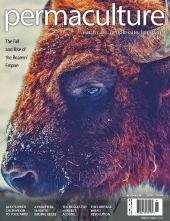



 There are many things I could suggest that have worked for me, but I kind of feel every body is different and what helps one person can hurt another and vice versa. If you can afford it, or if it's covered by insurance, and you're interested in it, I would recommend finding a really good natural doctor to help guide you through everything. Those are hard to come by since many have different techniques and not all will work for you but if you can find someone who knows the body and all of the symptoms very well then you can really heal a lot. Even seeing a chiropractor can do quite a lot of healing.
There are many things I could suggest that have worked for me, but I kind of feel every body is different and what helps one person can hurt another and vice versa. If you can afford it, or if it's covered by insurance, and you're interested in it, I would recommend finding a really good natural doctor to help guide you through everything. Those are hard to come by since many have different techniques and not all will work for you but if you can find someone who knows the body and all of the symptoms very well then you can really heal a lot. Even seeing a chiropractor can do quite a lot of healing.


Kevin MacBearach wrote:After I watched the video, "deep chicken bedding with christmas trees in the chicken coop" http://www.youtube.com/watch?v=zwjPj1p1Azo , I started pruning pine branches around my property and filled the coop with the small twigs. Instantly the strong ammonia smell was gone and in it's place was a nice pine-scent which lasted over a week. Even after the pine-scent dissipated, the ammonia smell never returned.
At this point I can't say enough about how well this has worked out. I feel that this is the first thing I've done at my farm that's felt like I'm doing permaculture since I don't leave the property to buy straw anymore, and just use what's on my own property, which works ten times better.
The lady in the video used old Christmas trees, and gave the impression that either because the chickens spend more time in the coop in winter, or she hasn't many conifers growing where she lives so it could be a seasonal thing, for her anyway. I on the other hand am cutting fresh ones and using them, and I'm wondering what else it would work, pig bedding, or cow? I have yet to use the finished product of broken-down pine needles and chicken manure as a compost on the soil so I have no idea how it will be for growing stuff. It's strange that, besides this one video, I've seen nothing else on mulching pine needles with manure to make good compost. If it's so great, then why isn't there more chatter about it?
Max Tanner wrote:I agree with the good advice of not buying the birds from an auction.
You can call him before and meet at the sales barn. There are outside booths as well. Or go to his farm directly.
At the sales barn;
There are inside animal sales as well as outside implement sales of all kinds. Go early to register and look at what is there. You can pick up lots of equipment of all sorts for pennies on the dollar.
Always go with an experienced person and listen to the auctioneer and watch the flow of events and staff.
cheers